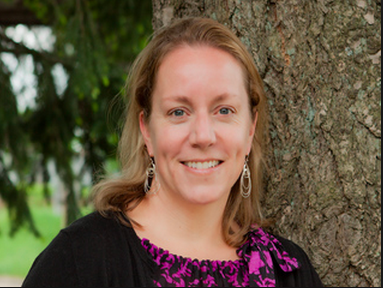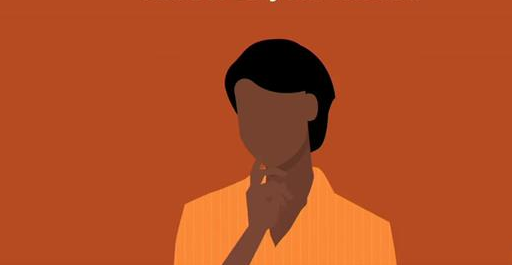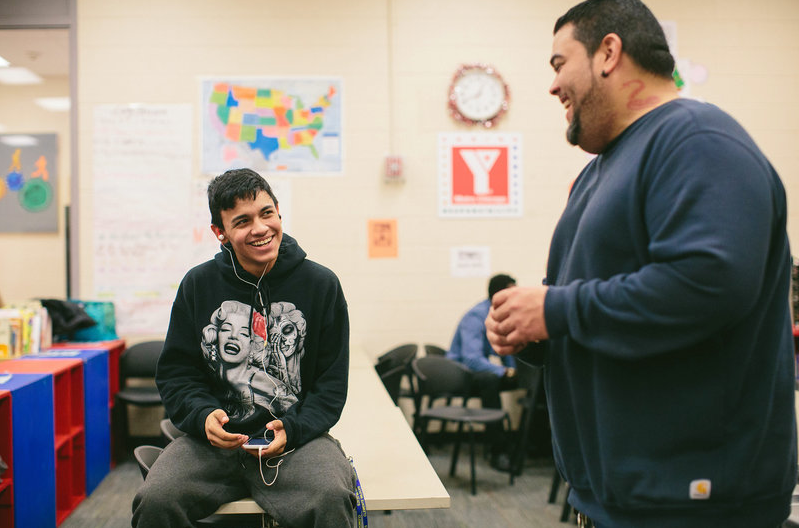Meet Kate Bronner, Foster Forward Program Coordinator
A note from Connected Learning Editor, Dr. Sarah Schwartz:
Mike Garringer recently wrote a thoughtful column about whether we should be devoting more time and resources to natural mentoring or focusing primarily on formal mentoring relationships. I wanted to highlight a program working with youth in the foster care system that is doing both, including youth initiated mentoring and strengthening natural supports, as well as traditional formal mentoring. Real Connections is a program within the organization Foster Forward, that aims to create long-term connections between youth in the foster care system and caring adults. The following Q&A with Kate Bronner, Real Connections Program Coordinator, describes the program model and some of their innovative practices.
 Sarah Schwartz (SS): Can you describe your program model?
Sarah Schwartz (SS): Can you describe your program model?
Kate Bronner (KB): Since 2006, the Real Connections program has pushed to expand the knowledge base on what works for helping older youth in care achieve permanent adult connections. While elevating its practice to meet or exceed national mentoring guidelines, Real Connections worked in collaboration with the Department of Children, Youth and Families and other partner organizations to implement innovative family finding techniques to advance permanency. Real Connections youth support specialists utilize three core components:
Eco-map – A visual representation of the youth’s current and past connections that helps us not only get to know the youth and where they are at, but also identify where they can build on or re-engage with existing connections. Real Connections staff will work with the youth and his/her treatment team to identify strengths and areas of need for youth in cultivating a network of support.
Record Mining – A strategy used to identify pieces of information that the youth may want to know or to locate information in their record that may have been lost as the youth’s case has transferred between case workers. Real Connections staff, in partnership with the Department of Children, Youth and Families, read through each line of a youths’ electronic and paper records to find leads on potential adults to connect a young person to.
Seneca Search – An online tool that specializes in searching public records to locate relatives of children in foster care. For youth in care, these connections are sometimes not known or were lost. Staff work with a youth’s treatment team to share this information with youth and build networks of support for youth.
SS: What are some of the ways that you help youth identify natural supports and potential mentors in their lives?
KB: The three techniques described above are all very important components of identifying natural supports. We often start with doing an eco-map and asking who the youth feels is important in their life. We stress that this is a youth driven process and aim to honor the voice of the young person we are working with. When asked if they’ve ever done anything like this before, many reply that this is their first time being asked to identify their own supports. During the eco-map process we ask very pointed questions about the different systems that they have been involved with (i.e. schools they’ve attended, placements, churches, etc). We use this information to better understand the youth and help them to recall potential supports. In addition to eco-mapping, we establish relationships with all members of that youth’s treatment team (DCYF worker, clinician, foster parent, group home staff, etc.) to ensure we are not missing any potential supports and gaining the necessary background information on the supports the youth has identified. We are also co-located within each of the four regional DCYF offices and have access to case files. With that access we are able to search the records for other adults who may have come forward or previous connections that were forgotten about. We also utilize Seneca Searches which pulls names of relatives or neighbors from national databases that we can outreach to potential lost familial relationships. This is a collaborative process and guardian consent is needed prior outreaching to any identified support or connection.
SS: Who do the youth you work with generally identify as potential mentors (e.g., family members, teachers, staff they have worked with professionally)?
KB: This varies widely; coaches, former teachers, previous staff that they have encountered while in care, family friends, relatives they have become disconnected from.
SS: What if youth can’t identify any suitable adults in their lives?
KB: If a youth is unable or unwilling to participate in the above mentioned strategies, they are able to be matched with a community mentor. We revisit the idea of exploring their own network after we’ve developed more of a relationship with the youth.
SS: What happens if an adult identified by youth cannot commit to being a mentor?
KB: When we outreach to youth identified supports we first ask the young person what type of contact they would like to have with that person (i.e. phone calls, letter writing, visits, etc.). When we speak to the identified adult support, we see what type of contact they are able or willing to offer the youth. If they are not able to commit at this time we get guidance from the youth’s clinician on best ways to notify the youth while being sensitive to their clinical needs. In some cases when supports couldn’t commit to being a mentor, they have offered to provide stories or pictures from their time together. One youth identified a former foster parent whom she wished to have as her mentor and although the foster parent could not mentor her, she did provide pictures from her childhood while she was living at her home. This youth had no childhood photos and one could only imagine the impact this had on her.
SS: What type of training and support do you provide to youth and mentors? How does this differ with mentors who were identified from youth’s social networks versus those who were assigned by the program?
KB: The training and support that is offered to a youth or mentor that become involved in the Real Connections program is the same no matter if you knew each other before or not.
When youth enter into the program there is no formal training, however they are matched with a Youth Support Specialist that helps prepare them for a mentoring relationship and will stay with them throughout their time within the program to support as needed.
Mentors participate in a 5 hour training aimed at giving them an understanding of the state’s child welfare system, behaviors that the youth they mentor may exhibit based on some of the trauma, abuse or neglect they have experienced and how that impacts their growth and development. Mentors are given ample opportunities to discuss their hopes and fears around mentoring and participate in activities geared towards preparing them for the types of situations they may encounter during their mentoring relationship. Background clearances and a home interview and reference check are also conducted. Mentors are then connected with a staff from Real Connections to help support them in their mentoring relationship.
SS: What are some of the challenges you have encountered in connecting youth with mentors from their networks?
KB: Some of the challenges include; unable to locate the identified adult supports, identified support is non-responsive to our outreach attempts or unable to make the commitment. Resistance by members of that youths treatment team (afraid to open old wounds, stating it’s not the right time to introduce someone from their past or needing a “fresh start”, etc.), agency policies sometimes dictate a “no contact” clause when youth identify a former staff. Sometimes youths own fear of rejection makes this process incredibly challenging, especially when it’s echoed by people around them telling them they need a fresh start. In those situations, we take our time in building a relationship and take it at the youth’s pace.
SS: Can you tell me about a success story in connecting youth with a mentor from their networks? Note: Names have been changed to protect the privacy of program participants.
Story provided by Danielle Macedo, Youth Support Specialist:
When I started working with Danny, one of the first conversations I had with him was about people and things that were important to him. He brought up that one of his best supports was a teacher at his school, Carrie. After speaking with his team of providers, I outreached to Carrie to discuss her interest of being connected to him outside of school. She had already gone above and beyond her role as a teacher and was helping him to get involved in community activities and getting him things he needed, like a winter coat. She was excited to hear about the Real Connections program and the support that would be provided for her in the context of her relationship with Danny. In the past, she had struggled with her knowledge of the child welfare system and the dynamics of the group home he lived in. Carrie received training and 1:1 support to help her to better understand Danny’s environment and how to best provide support to him.
Carrie and Danny have now been matched through the program for over a year. Her fuller understanding of him better informed her assistance with helping him graduate high school. She now works with him to help prepare him for his impending emancipation from the child welfare system, helping him learn independent living skills such as self-care, job searching, and even cooking. Although Danny may have thought he would say goodbye to all of his teachers when he left high school, he now has a long lasting support system in Carrie, a permanent adult connection in his life.
SS: Most mentoring programs focus exclusively on matching youth with volunteer mentors recruited by the program. How did your program think of connecting youth with mentors from their existing social networks?
KB: The idea of looking at a child’s personal network for potential supports came from this desire to identify lifelong supports and from the program founder, Julie DiBari’s own experience as a foster child. Julie DiBari described:
Because I had also been in care and aged out, I understood that children in care come from somewhere and have people that have cared about them along the way. It seemed to make sense to identify those people rather than to only look randomly in the community. Also, having worked with mentoring programs for many years I knew that a mentoring model and all the associated training and support that had been carefully developed over the years could really help to engage adults who already cared about these kids.
The more we looked into it we found that people like Kevin Campbell and organizations like the Annie E. Casey Foundation and even local Rhode Islanders like Tonya Glantz at the Rhode Island Child Welfare Institute and Jim Gannaway at Casey Family Services were already looking at identifying connections from youths’ own networks through record mining, eco-mapping and other strategies. What we were doing that was unique was using the tried and true mentoring model of training, background checks and ongoing support for the relationship and with these individuals already known to the child. My experience as a foster child and often having things done “to” me rather than “with” me made it important to me that the youth be in charge of the process of identifying potential supports. We also needed to make mentoring work for teens in other ways. A typical mentoring model is geared at younger children, not at teens, and teens are at a developmental stage where it is normal for them to disengage from adults and connect more with peers. We knew from Jean Rhodes research that if we wanted to engage them in a relationship with either a known or unknown adult we needed to focus on things that were important to the youth in the moment – like help with jobs, college and buying their first car. We tried to frame the whole experience around their goals.
As Foster Forward began to fundraise to pilot this work, the Jim Casey Youth Opportunities Initiative’s local affiliate in Rhode Island was contacted. A presentation was made to their local community partnership board and the Real Connections pilot was awarded a $25,000 grant to test the work with 25 youth. The alignment of what we were trying to do to improve permanency and well-being for older youth in foster care was so aligned with the Jim Casey Youth Opportunities Initiative’s theory of change that it was a perfect fit. In fact, this partnership was the beginning of a transformative partnership in Rhode Island between the then Jim Casey grantee, Casey Family Services and Foster Forward. In 2009, Foster Forward became the official lead of the Jim Casey work (now known as ASPIRE) and has used our connections to the national work to share our successes across the country for using youth centered mentoring as a vehicle for permanency.
SS: If a program that has been implementing traditional formal mentoring wanted to start strengthening mentee’s natural mentoring relationships or drawing mentors from youth’s existing social networks, what advice would you give them?
KB: Start by asking the youth about their past connections and who they’d like to reconnect with or develop a stronger relationship with. If youth are initially resistant to the process or can’t think of specific names start by asking about more neutral topics; what is your favorite color, TV show to watch, favorite artist. If they seem to be opening up and more accepting of the process you can ask more pointed questions about specific people or places that have been important to them. This can be a very emotional process for some kids as you are asking them to recall past placements to people whom they’ve lost touch with so engaging with those that clinically support the youth is crucial. This is very much a youth driven process and can take several attempts to complete, let the youth guide the pace.
Let the youth know that this is a collaborative process and that you will need to run the names identified by the adults caring for them to ensure there are no restrictions on the people identified. Depending on the youth and their comfort level, they may want to be involved in the outreach to the identified supports. If not, they can assist in writing questions they want asked. Again, this is a youth driven process and we are trying to honor their voice so that we are not one more program that is doing things “for” instead of “with” this foster youth.










